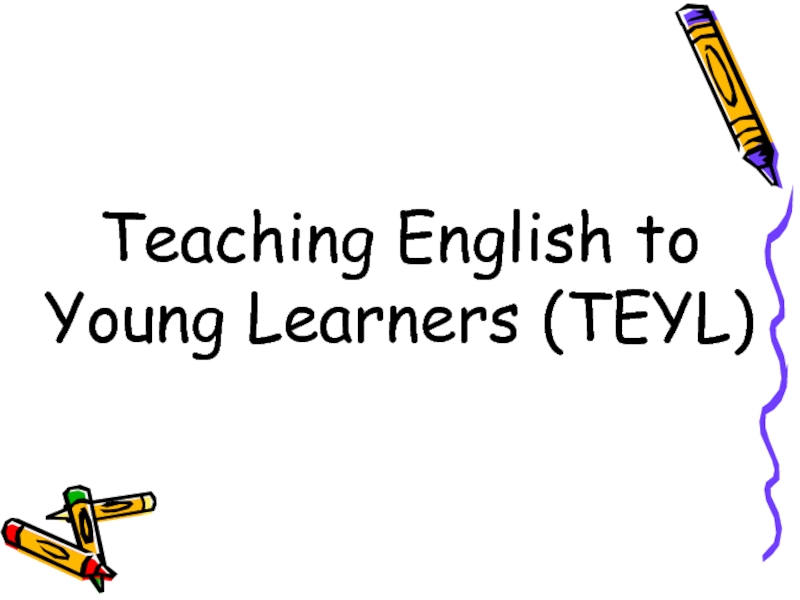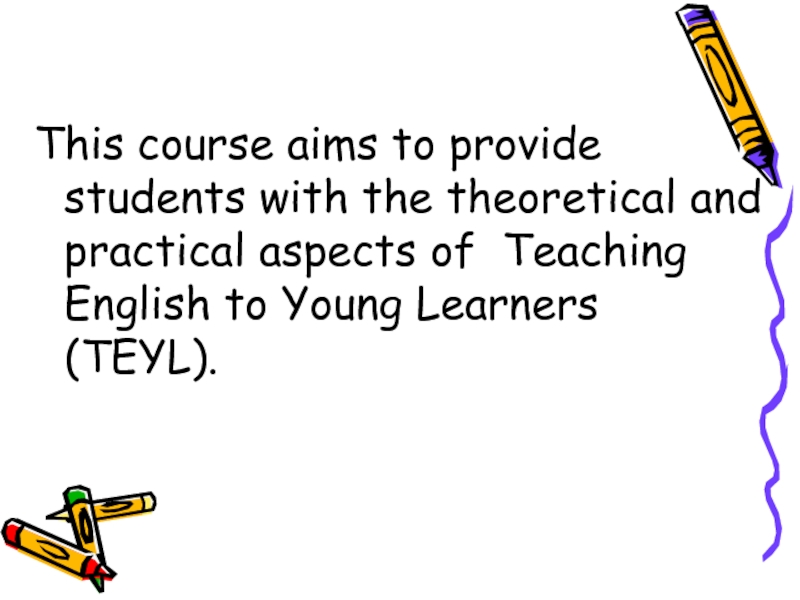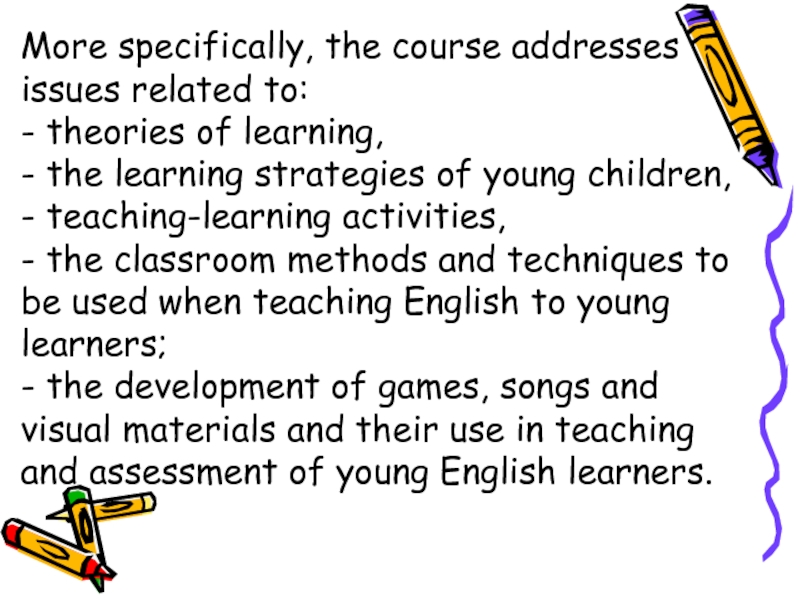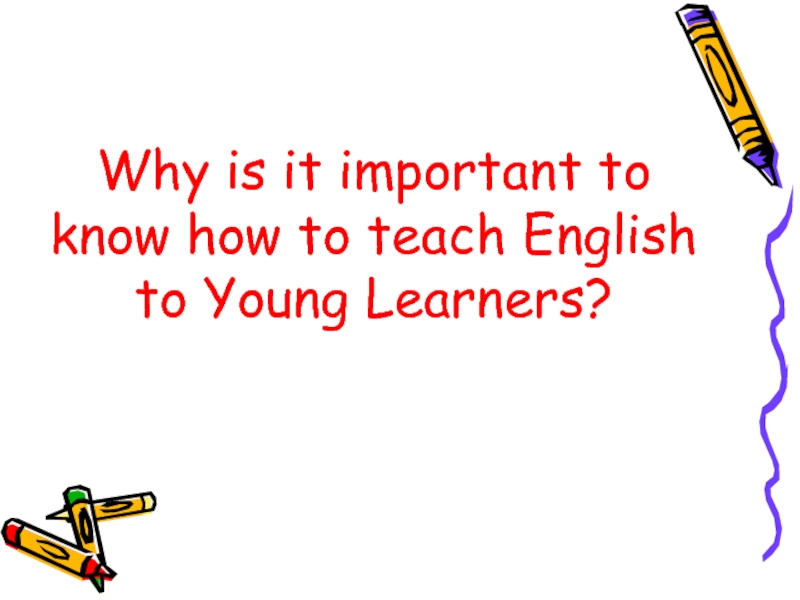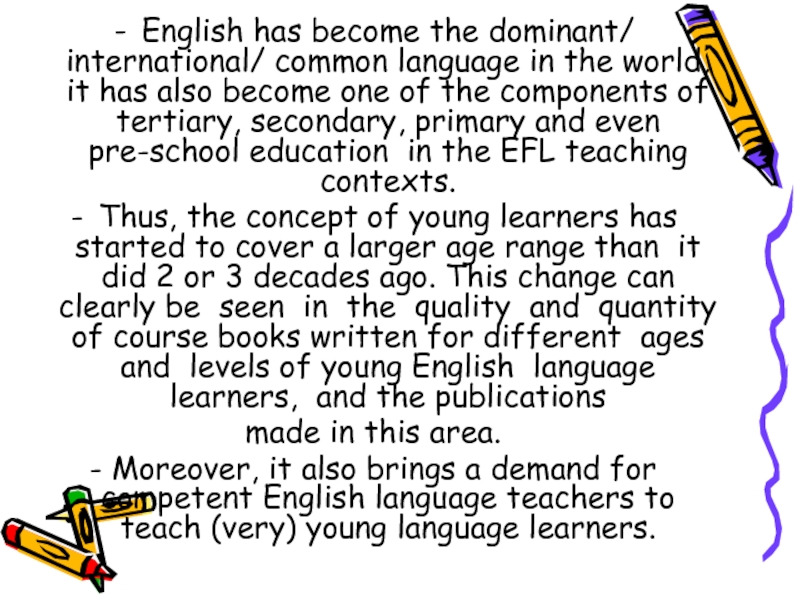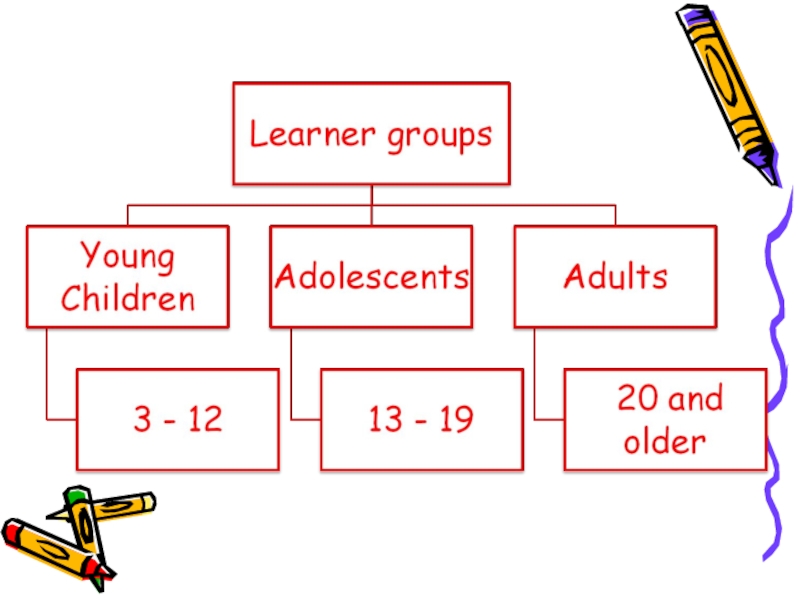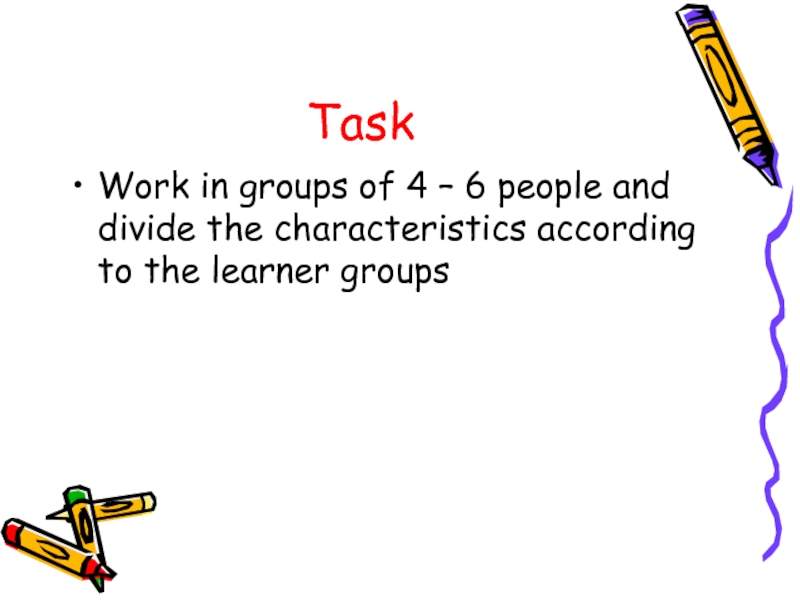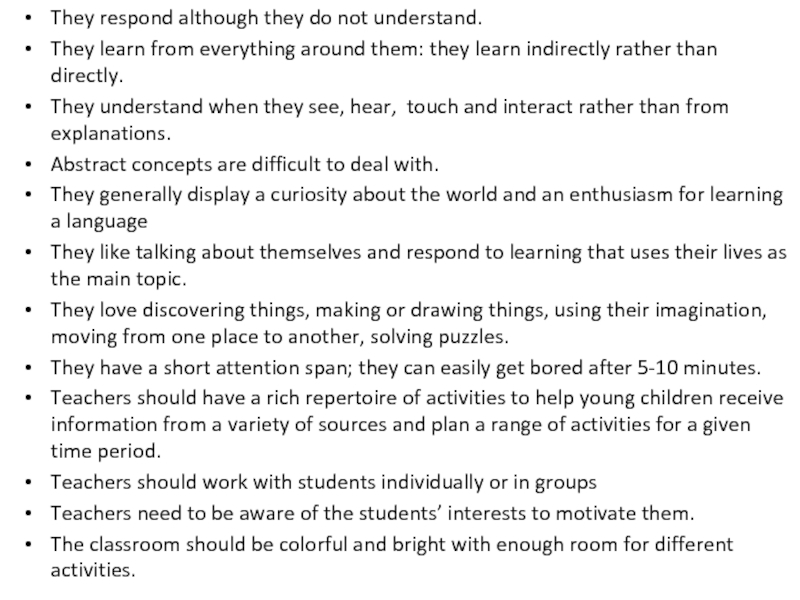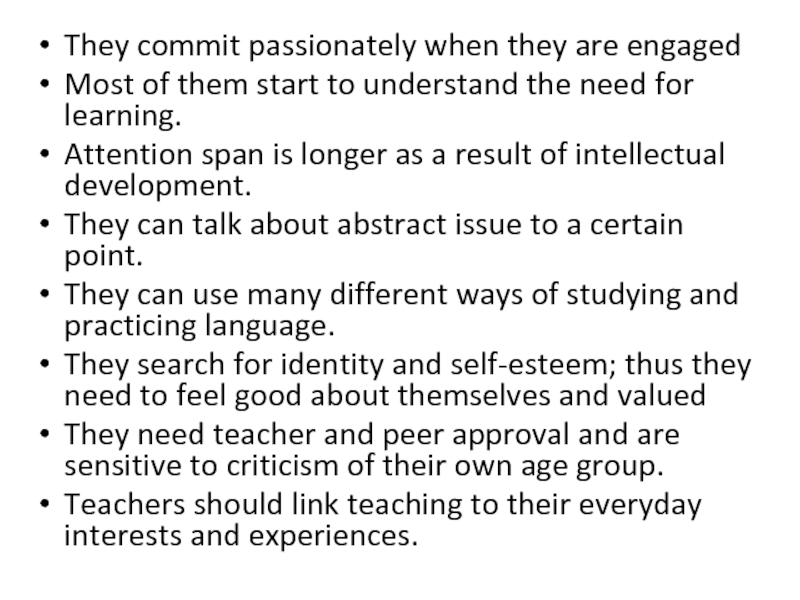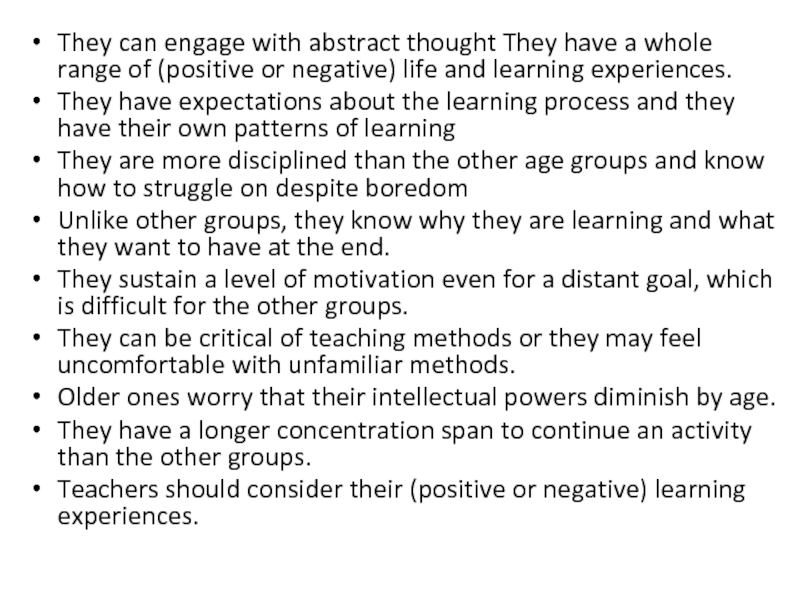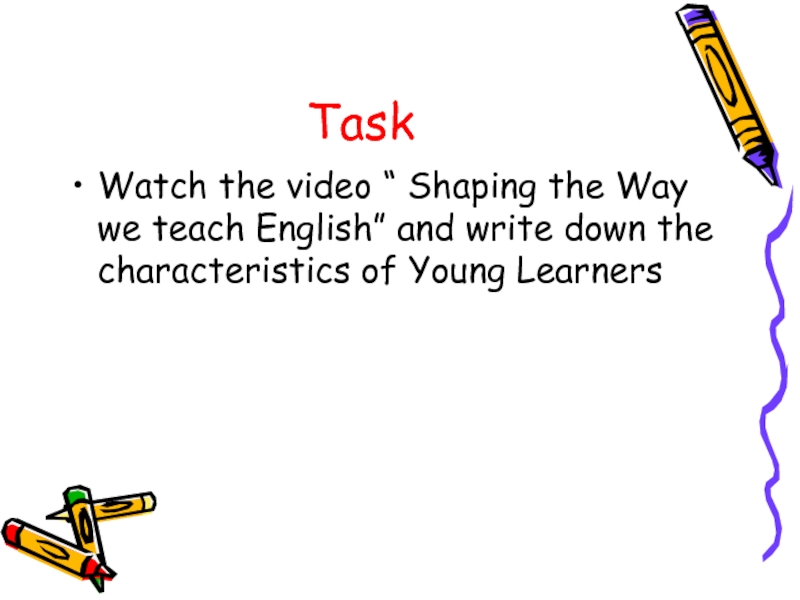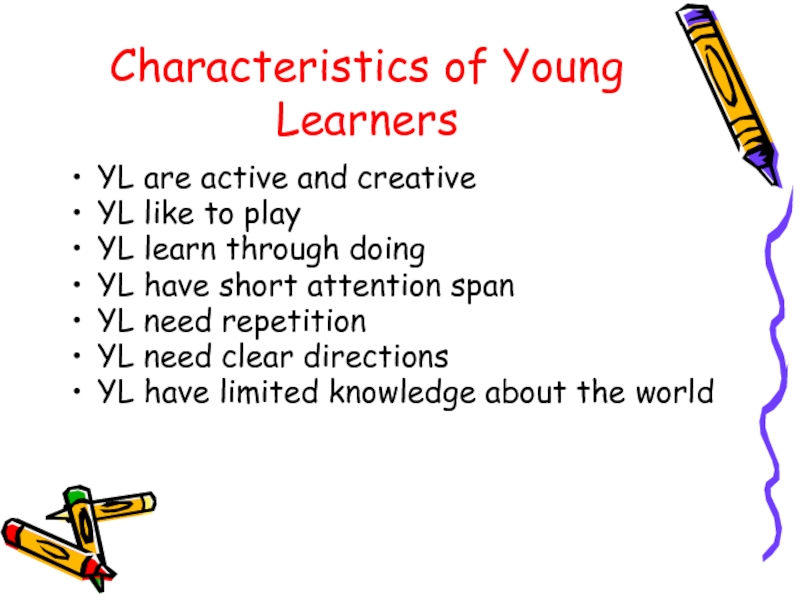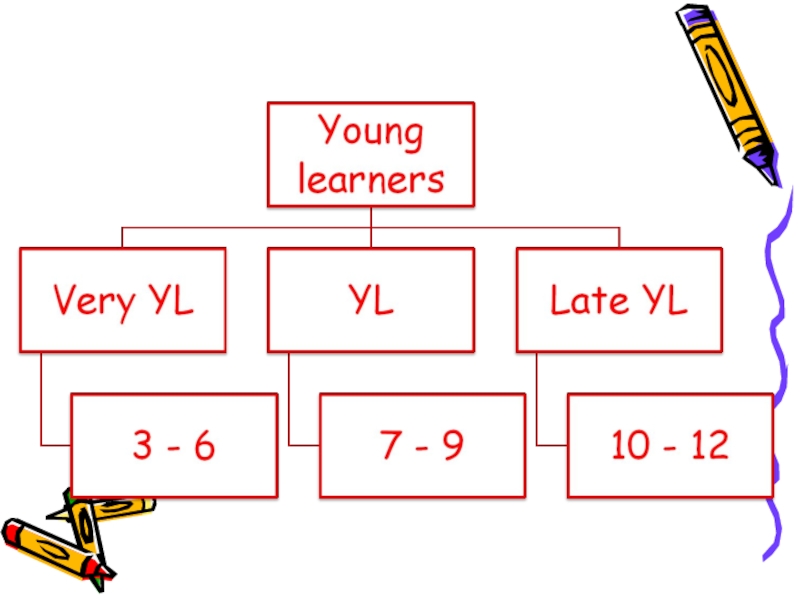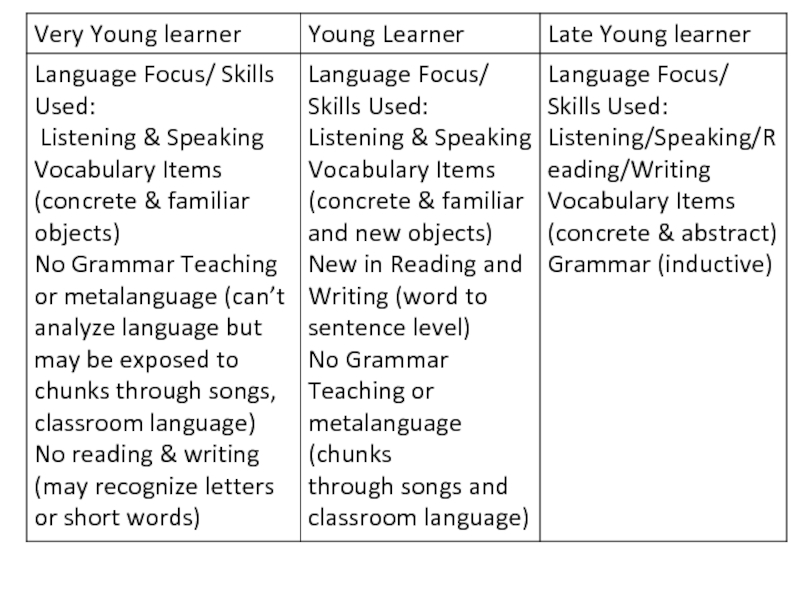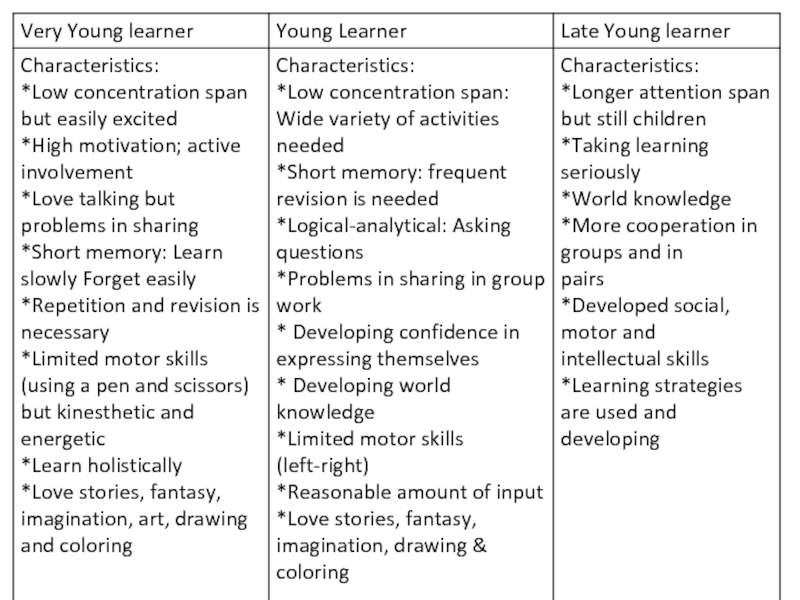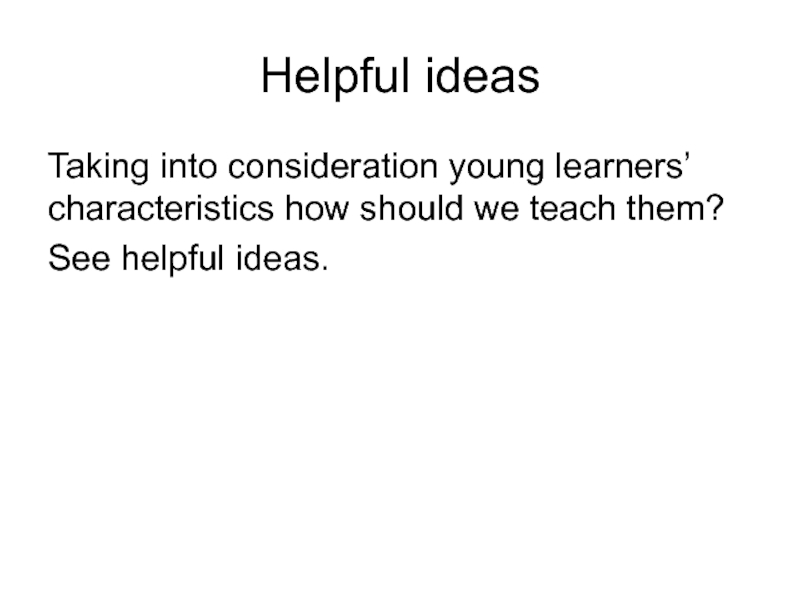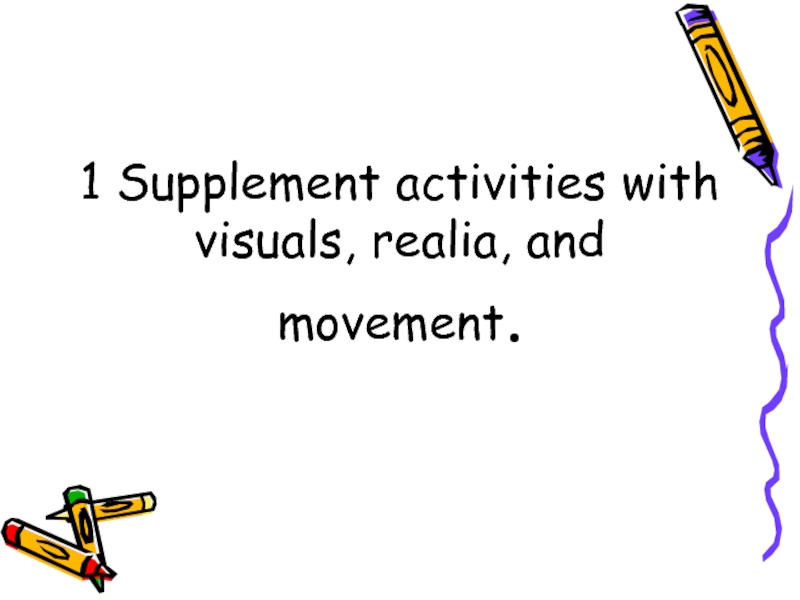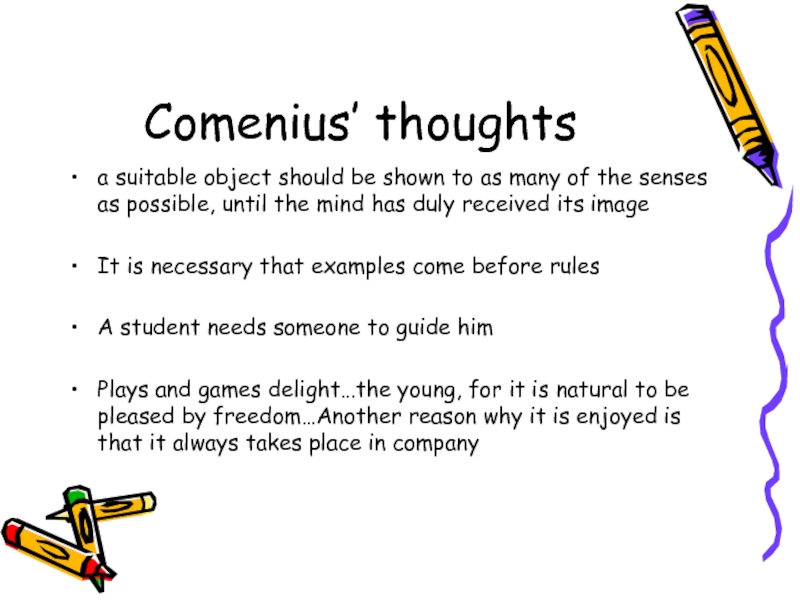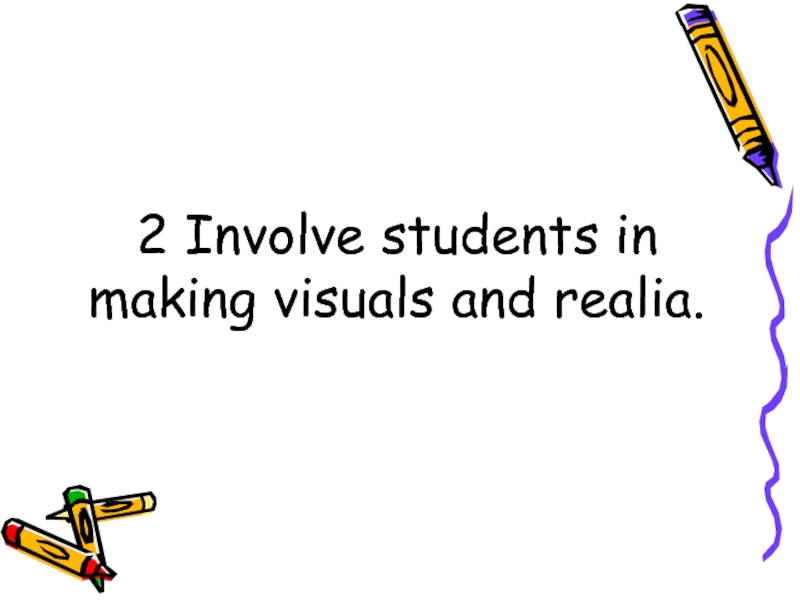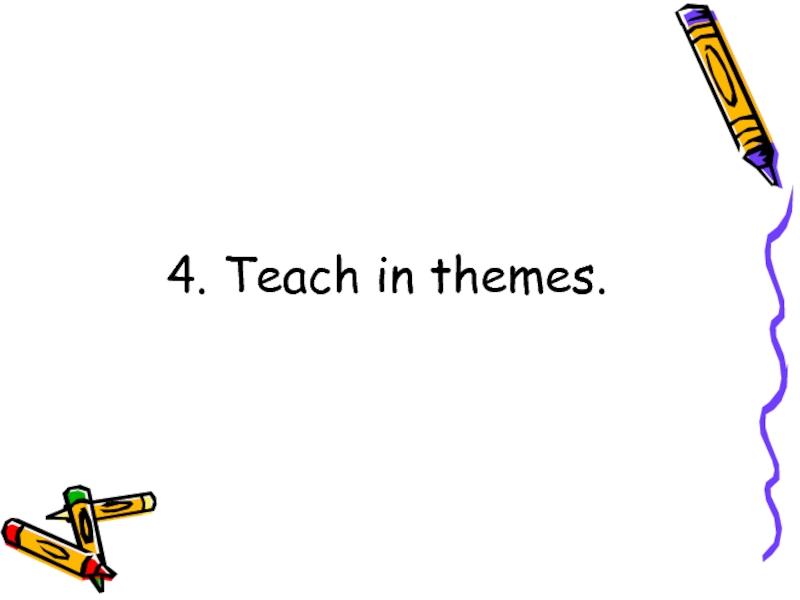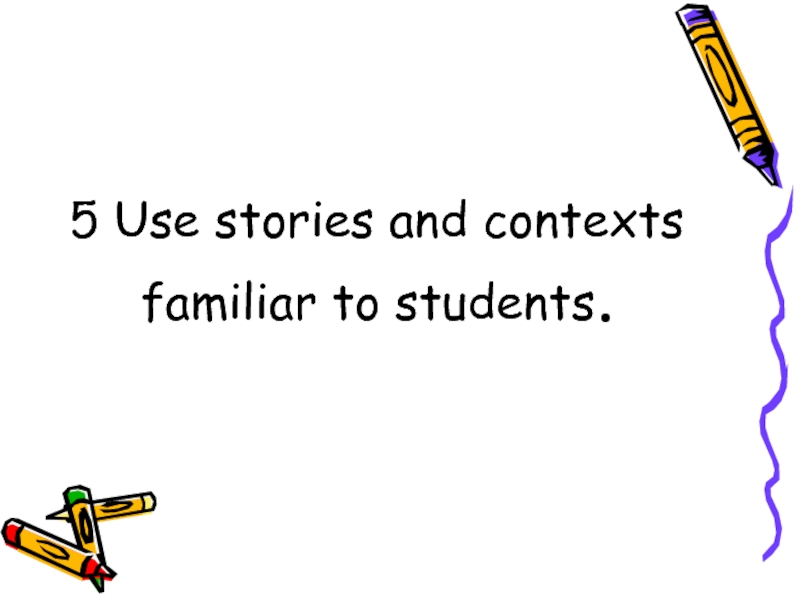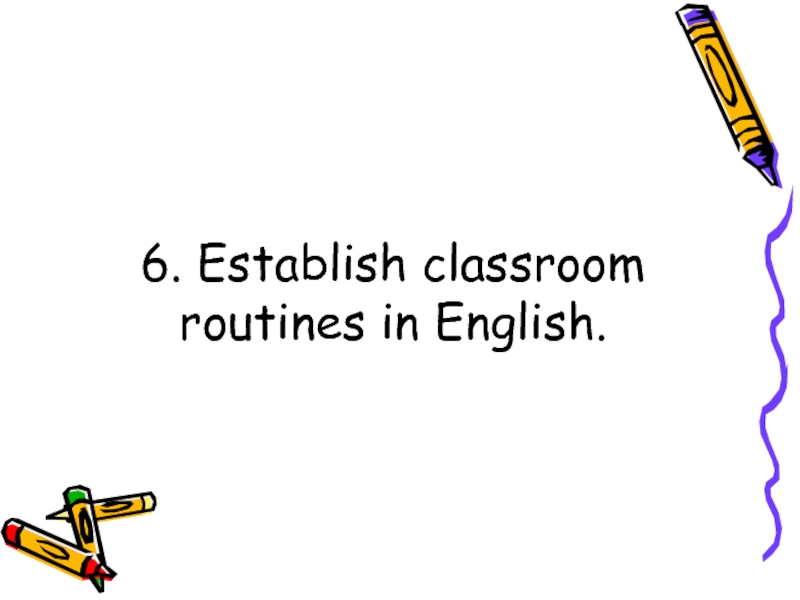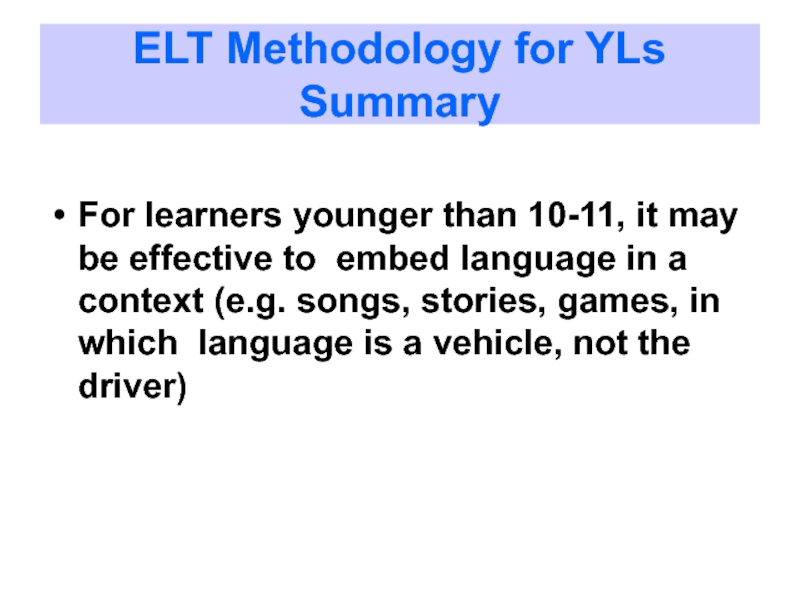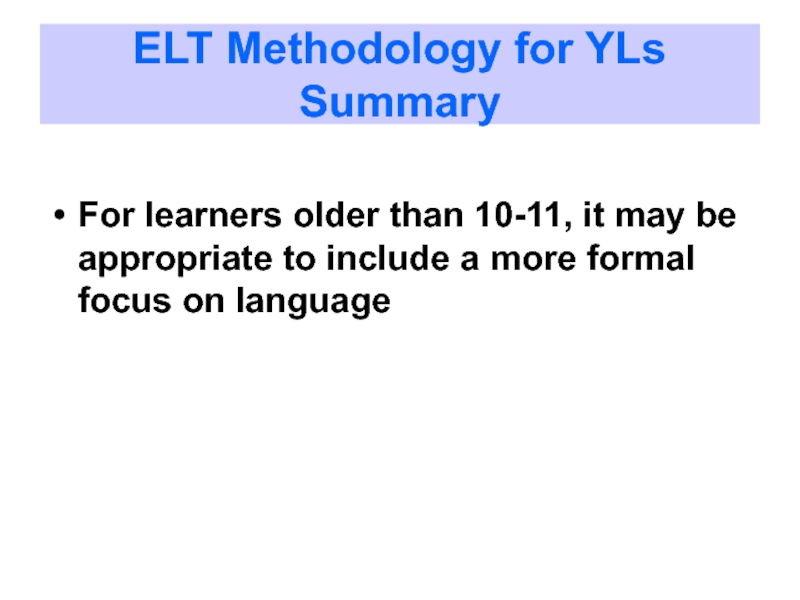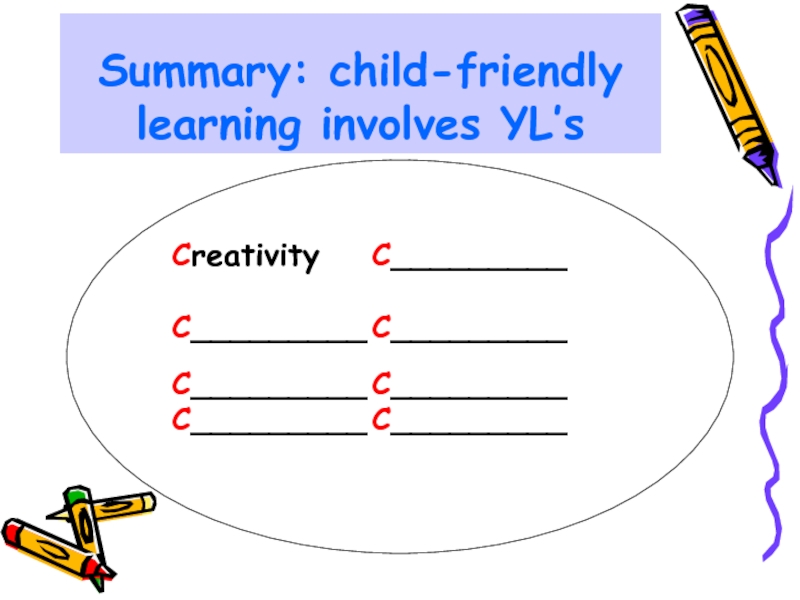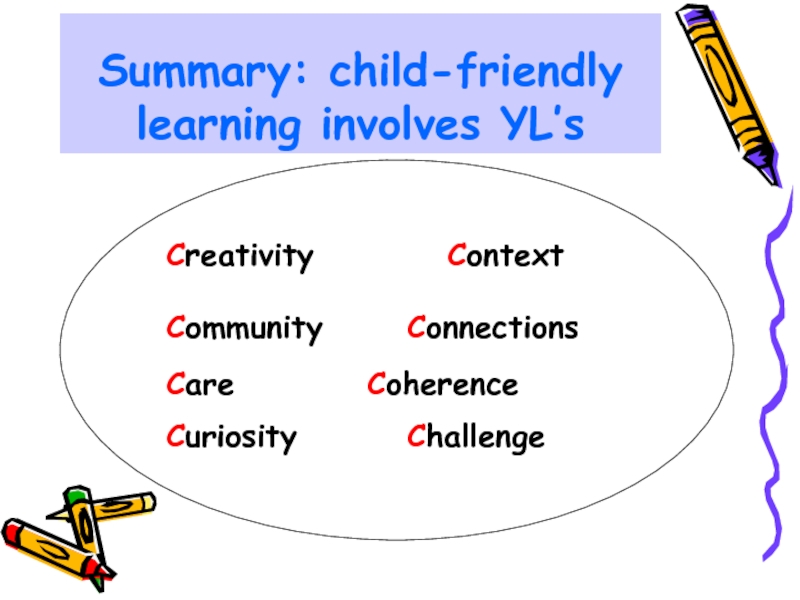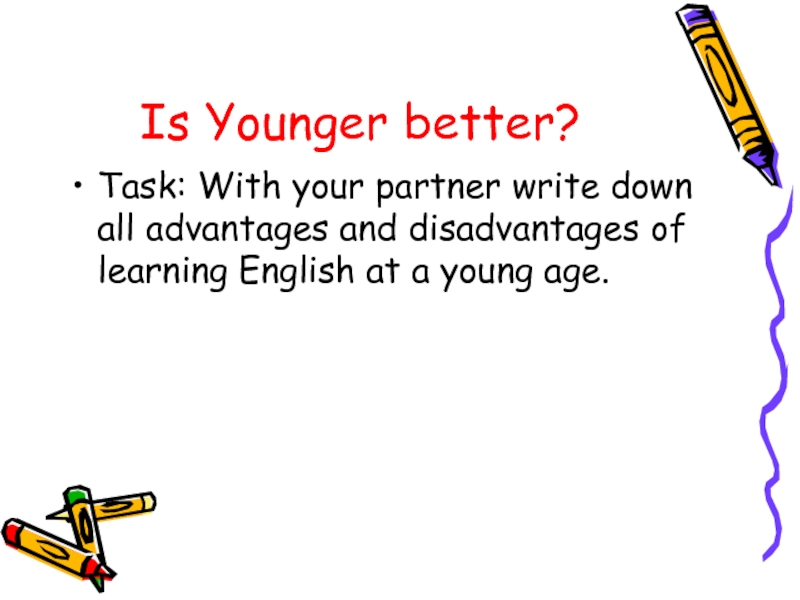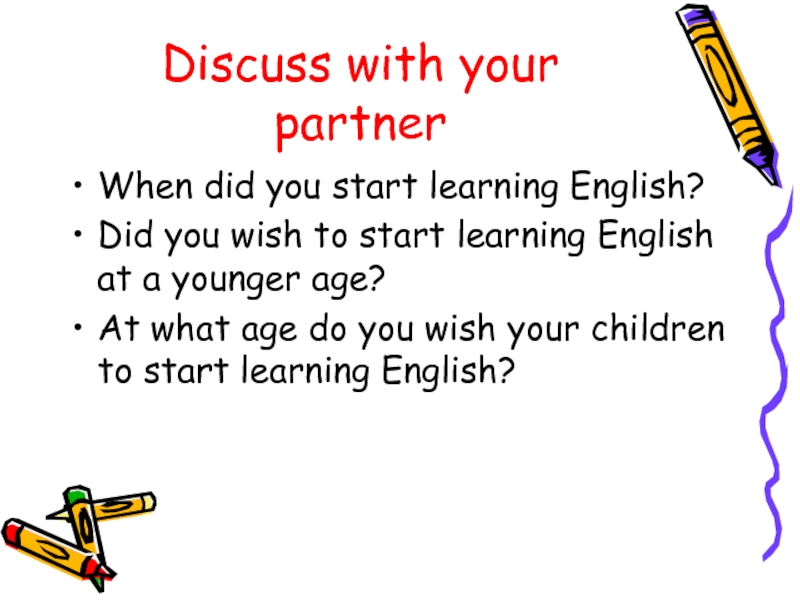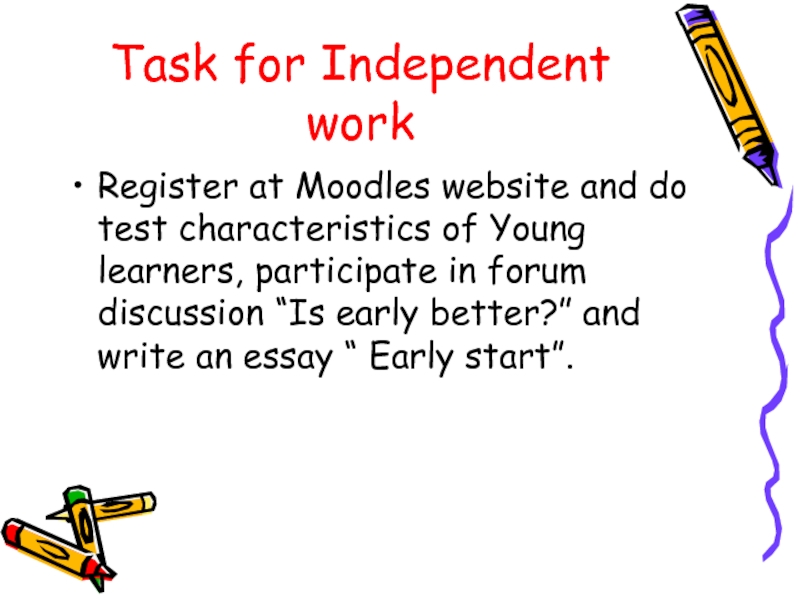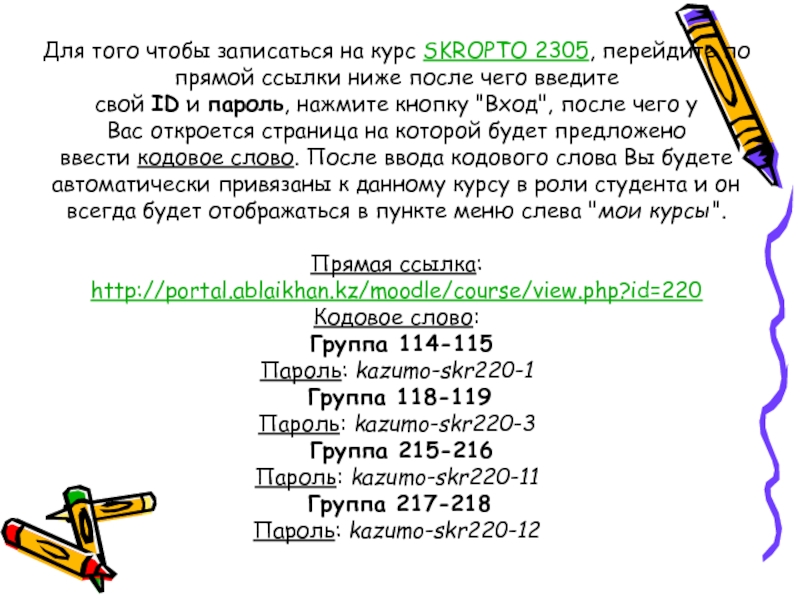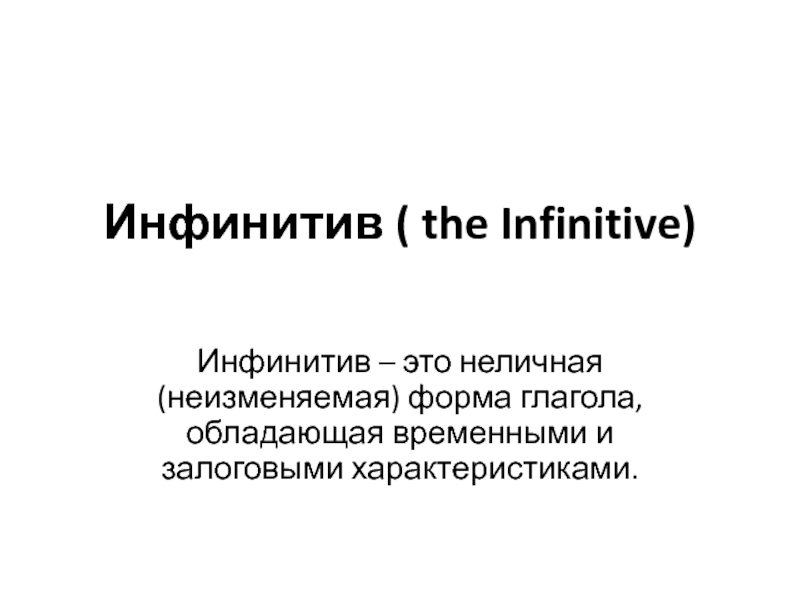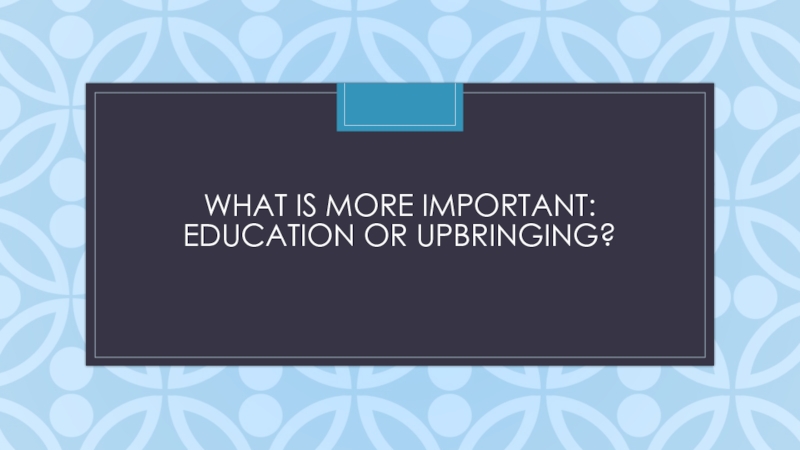- Главная
- Разное
- Дизайн
- Бизнес и предпринимательство
- Аналитика
- Образование
- Развлечения
- Красота и здоровье
- Финансы
- Государство
- Путешествия
- Спорт
- Недвижимость
- Армия
- Графика
- Культурология
- Еда и кулинария
- Лингвистика
- Английский язык
- Астрономия
- Алгебра
- Биология
- География
- Детские презентации
- Информатика
- История
- Литература
- Маркетинг
- Математика
- Медицина
- Менеджмент
- Музыка
- МХК
- Немецкий язык
- ОБЖ
- Обществознание
- Окружающий мир
- Педагогика
- Русский язык
- Технология
- Физика
- Философия
- Химия
- Шаблоны, картинки для презентаций
- Экология
- Экономика
- Юриспруденция
Teaching English to young learners ( teyl) презентация
Содержание
- 1. Teaching English to young learners ( teyl)
- 2. This course aims to provide students with
- 3. More specifically, the course addresses issues related
- 4. Why is it important to know how to teach English to Young Learners?
- 5. English has become the dominant/ international/ common
- 6. Age plays a crucial role in
- 8. Task Work in groups of 4
- 9. They respond although they do not understand.
- 10. They commit passionately when they are engaged
- 11. They can engage with abstract thought They
- 12. Task Watch the video “ Shaping
- 14. Characteristics of Young Learners YL are
- 18. Helpful ideas Taking into consideration young
- 19. 1 Supplement activities with visuals, realia, and movement.
- 20. Comenius’ thoughts a suitable object should be
- 21. 2 Involve students in making visuals and realia.
- 22. 3 Move from activity to activity.
- 23. 4. Teach in themes.
- 24. 5 Use stories and contexts familiar to students.
- 25. 6. Establish classroom routines in English.
- 26. ELT Methodology for YLs Summary For
- 27. ELT Methodology for YLs Summary For
- 28. Summary: child-friendly learning involves YL’s Creativity C_________ C_________ C_________ C_________ C_________ C_________ C_________
- 29. Creativity Context
- 30. Is Younger better? Task: With your partner
- 31. Discuss with your partner When did you
- 32. Task for Independent work Register at
- 33. Для того чтобы записаться на курс SKROPTO 2305, перейдите
Слайд 2This course aims to provide students with the theoretical and practical
aspects of Teaching English to Young Learners (TEYL).
Слайд 3More specifically, the course addresses issues related to: - theories of learning,
- the learning strategies of young children, - teaching-learning activities,
- the classroom methods and techniques to be used when teaching English to young learners;
- the development of games, songs and visual materials and their use in teaching and assessment of young English learners.
Слайд 5English has become the dominant/ international/ common language in the world,
it has also become one of the components of tertiary, secondary, primary and even pre-school education in the EFL teaching contexts.
Thus, the concept of young learners has started to cover a larger age range than it did 2 or 3 decades ago. This change can clearly be seen in the quality and quantity of course books written for different ages and levels of young English language learners, and the publications
made in this area.
- Moreover, it also brings a demand for competent English language teachers to teach (very) young language learners.
Thus, the concept of young learners has started to cover a larger age range than it did 2 or 3 decades ago. This change can clearly be seen in the quality and quantity of course books written for different ages and levels of young English language learners, and the publications
made in this area.
- Moreover, it also brings a demand for competent English language teachers to teach (very) young language learners.
Слайд 6Age plays a crucial role in what we teach and how
we teach it, since a young learner class is different from an
adult and/or a teenager class in terms of the learners’ language learning needs, the
language competences emphasized, and the cognitive skills addressed. That’s why, it
is highly important to show the differences of these three learner groups keeping in
mind the fact that every learner is unique (Harmer, 2007):
Слайд 8Task
Work in groups of 4 – 6 people and divide
the characteristics according to the learner groups
Слайд 9They respond although they do not understand.
They learn from everything
around them: they learn indirectly rather than directly.
They understand when they see, hear, touch and interact rather than from explanations.
Abstract concepts are difficult to deal with.
They generally display a curiosity about the world and an enthusiasm for learning a language
They like talking about themselves and respond to learning that uses their lives as the main topic.
They love discovering things, making or drawing things, using their imagination, moving from one place to another, solving puzzles.
They have a short attention span; they can easily get bored after 5-10 minutes.
Teachers should have a rich repertoire of activities to help young children receive information from a variety of sources and plan a range of activities for a given time period.
Teachers should work with students individually or in groups
Teachers need to be aware of the students’ interests to motivate them.
The classroom should be colorful and bright with enough room for different activities.
They understand when they see, hear, touch and interact rather than from explanations.
Abstract concepts are difficult to deal with.
They generally display a curiosity about the world and an enthusiasm for learning a language
They like talking about themselves and respond to learning that uses their lives as the main topic.
They love discovering things, making or drawing things, using their imagination, moving from one place to another, solving puzzles.
They have a short attention span; they can easily get bored after 5-10 minutes.
Teachers should have a rich repertoire of activities to help young children receive information from a variety of sources and plan a range of activities for a given time period.
Teachers should work with students individually or in groups
Teachers need to be aware of the students’ interests to motivate them.
The classroom should be colorful and bright with enough room for different activities.
Слайд 10They commit passionately when they are engaged
Most of them start
to understand the need for learning.
Attention span is longer as a result of intellectual development.
They can talk about abstract issue to a certain point.
They can use many different ways of studying and practicing language.
They search for identity and self-esteem; thus they need to feel good about themselves and valued
They need teacher and peer approval and are sensitive to criticism of their own age group.
Teachers should link teaching to their everyday interests and experiences.
Attention span is longer as a result of intellectual development.
They can talk about abstract issue to a certain point.
They can use many different ways of studying and practicing language.
They search for identity and self-esteem; thus they need to feel good about themselves and valued
They need teacher and peer approval and are sensitive to criticism of their own age group.
Teachers should link teaching to their everyday interests and experiences.
Слайд 11They can engage with abstract thought They have a whole range
of (positive or negative) life and learning experiences.
They have expectations about the learning process and they have their own patterns of learning
They are more disciplined than the other age groups and know how to struggle on despite boredom
Unlike other groups, they know why they are learning and what they want to have at the end.
They sustain a level of motivation even for a distant goal, which is difficult for the other groups.
They can be critical of teaching methods or they may feel uncomfortable with unfamiliar methods.
Older ones worry that their intellectual powers diminish by age.
They have a longer concentration span to continue an activity than the other groups.
Teachers should consider their (positive or negative) learning experiences.
They have expectations about the learning process and they have their own patterns of learning
They are more disciplined than the other age groups and know how to struggle on despite boredom
Unlike other groups, they know why they are learning and what they want to have at the end.
They sustain a level of motivation even for a distant goal, which is difficult for the other groups.
They can be critical of teaching methods or they may feel uncomfortable with unfamiliar methods.
Older ones worry that their intellectual powers diminish by age.
They have a longer concentration span to continue an activity than the other groups.
Teachers should consider their (positive or negative) learning experiences.
Слайд 12Task
Watch the video “ Shaping the Way we teach English”
and write down the characteristics of Young Learners
Слайд 14Characteristics of Young Learners
YL are active and creative
YL like to play
YL
learn through doing
YL have short attention span
YL need repetition
YL need clear directions
YL have limited knowledge about the world
YL have short attention span
YL need repetition
YL need clear directions
YL have limited knowledge about the world
Слайд 18Helpful ideas
Taking into consideration young learners’ characteristics how should we
teach them?
See helpful ideas.
See helpful ideas.
Слайд 20Comenius’ thoughts
a suitable object should be shown to as many of
the senses as possible, until the mind has duly received its image
It is necessary that examples come before rules
A student needs someone to guide him
Plays and games delight…the young, for it is natural to be pleased by freedom…Another reason why it is enjoyed is that it always takes place in company
It is necessary that examples come before rules
A student needs someone to guide him
Plays and games delight…the young, for it is natural to be pleased by freedom…Another reason why it is enjoyed is that it always takes place in company
Слайд 26ELT Methodology for YLs Summary
For learners younger than 10-11, it may
be effective to embed language in a context (e.g. songs, stories, games, in which language is a vehicle, not the driver)
Слайд 27ELT Methodology for YLs Summary
For learners older than 10-11, it may
be appropriate to include a more formal focus on language
Слайд 28Summary: child-friendly learning involves YL’s
Creativity C_________
C_________ C_________
C_________ C_________
C_________ C_________
Слайд 29
Creativity Context
Community Connections
Care Coherence
Curiosity Challenge
Summary: child-friendly learning involves YL’s
Слайд 30Is Younger better?
Task: With your partner write down all advantages and
disadvantages of learning English at a young age.
Слайд 31Discuss with your partner
When did you start learning English?
Did you wish
to start learning English at a younger age?
At what age do you wish your children to start learning English?
At what age do you wish your children to start learning English?
Слайд 32Task for Independent work
Register at Moodles website and do test
characteristics of Young learners, participate in forum discussion “Is early better?” and write an essay “ Early start”.
Слайд 33Для того чтобы записаться на курс SKROPTO 2305, перейдите по прямой ссылки ниже
после чего введите свой ID и пароль, нажмите кнопку "Вход", после чего у Вас откроется страница на которой будет предложено ввести кодовое слово. После ввода кодового слова Вы будете автоматически привязаны к данному курсу в роли студента и он всегда будет отображаться в пункте меню слева "мои курсы".
Прямая ссылка:
http://portal.ablaikhan.kz/moodle/course/view.php?id=220
Кодовое слово:
Группа 114-115
Пароль: kazumo-skr220-1
Группа 118-119
Пароль: kazumo-skr220-3
Группа 215-216
Пароль: kazumo-skr220-11
Группа 217-218
Пароль: kazumo-skr220-12
